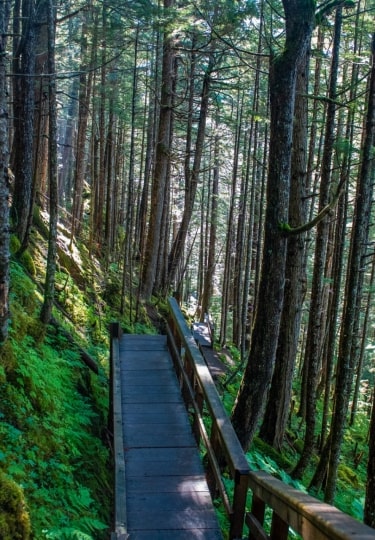These rainforest destinations, characterized by their tall trees, dense canopies and more than 100 inches of rainfall a year, act as the living, breathing lungs of the earth. These vast habitats thrive on every continent bar Antarctica and are the earth’s oldest living ecosystems, with some being up to 70 million years old.
That vast expanse of time and their often remote locations mean they can thrive with rare species of plants, insects, amphibians, birds, and mammals. Many rainforests are also protected habitats where we can gain a better understanding and appreciation of both the origins and the importance of life.
Geographically they can be as diverse as the species that live in them: dense woods next to coastal reefs, smoking volcanoes, and towering waterfalls all abound. Where will you explore for your next tropical rainforest vacation?
Iguazú National Park, Argentina/Brazil

Iguazú National Park, Argentina/Brazil
Straddling the border between the South American countries of Argentina and Brazil, the Iguazú National Park is home to one of the seven natural wonders of the world: The Iguazú Falls.
One of the world’s largest and most impressive systems of falls, it spreads out over two miles and 275 individual cascades, including the spectacular Garganta del Diablo (Devil’s Throat).

Iguazú National Park, Argentina/Brazil
Largest of all the falls, the Garganta del Diable is 500 feet wide and almost half a mile in length, with waters crashing down a jaw-dropping 270 feet. Boat trips can take you close enough to feel the full force of nature up close.
The famous waterfalls are naturally the main draw here, but the surrounding subtropical rainforest is no less impressive. It’s home to more than 2,000 species of plants, some 400 birds, and various mammals including tapirs, giant anteaters, howler monkeys, ocelots, and jaguar.
Hawaii Volcanoes National Park, Hawaii

Hawaii Volcanoes National Park, Hawaii
For those looking for a tropical rainforest vacation that might go with a bang, Hawaii Volcanoes National Park, which covers more than 300,000 acres on the south-eastern shore of the Big Island, is the place to go.
The national park is home to Mauna Loa, the world’s largest volcano, and Kilauea, one of the most active. Not only do they dominate the landscape with a wisp of smoke and hiss of steam rising from their craters, but they also shape the landscape here continually thanks to their volcanic activity.
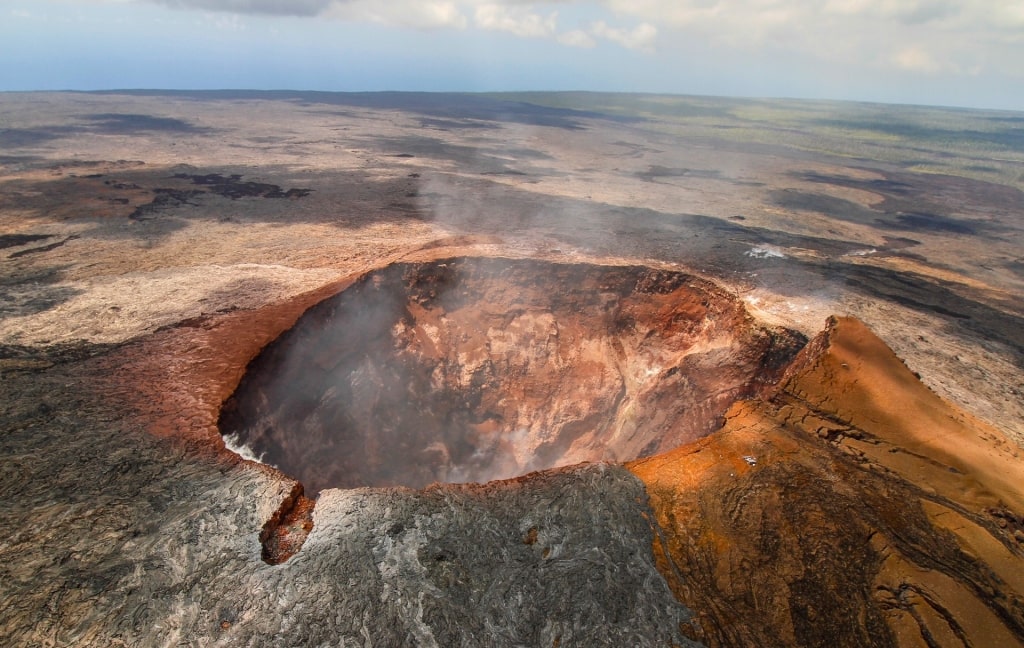
Mauna Loa, Hawaii
Must-sees include the Thurston Lava Tube, a natural tunnel carved by previous lava flows, and the Halema’uma’u Crater on Kilauea, which often glows with fiery red heat.
Head for the Kilauea Visitor Center, which offers daily information on the active lava flows and trails through both the volcanic landscape and the surrounding rainforests. Creatures you may spot in the forest include hawks, tropicbirds, the pretty crimson ‘apapane (a type of honeycreeper), and the hoary bat.
El Yunque National Forest, Puerto Rico
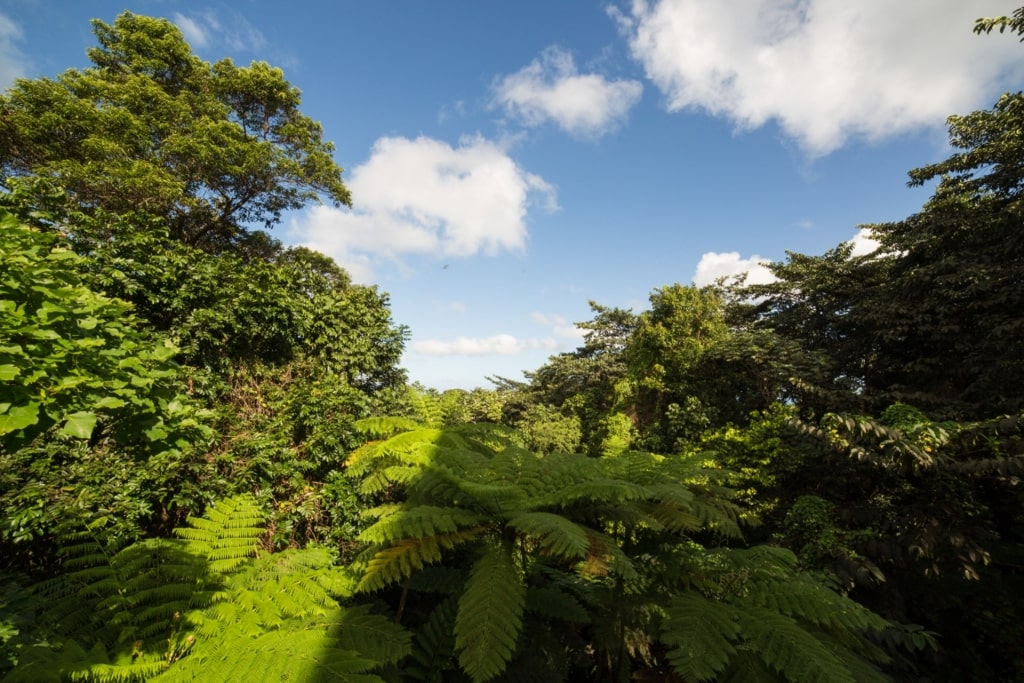
El Yunque National Forest, Puerto Rico
Local legend has it that El Yunque National Forest in Puerto Rico, hidden away in the Sierra de Luquillo mountain range, is home to the mythical Fountain of Youth.
It’s said that taking a dip in the waterfalls of La Mina and Juan Diego is enough to refresh both body and soul. While that’s open to debate, the magnificence of El Yunque is unquestioned.
Its 28,000-acre canopy plays host to a complex ecosystem of more than 240 different types of plants and trees including a special type of bioluminescent fungi, and the rare Sierra palm.
Listen out on visit for the call of the endangered Puerto Rican parrot, the distinct, high-pitched “beep” of the tiny coqui frog, and the cry of street vendors selling local delicacies on the winding road to the forest entrance.
Daintree Rainforest, Australia
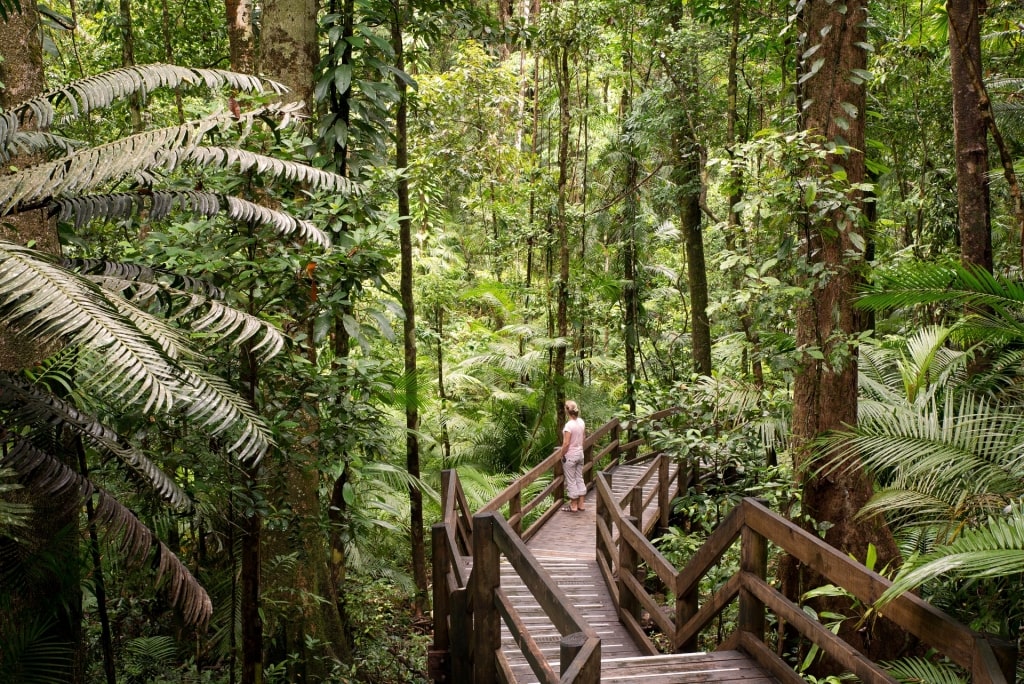
Daintree Rainforest, Australia
While the Kuku Yalanji people were the original inhabitants of the Daintree Rainforest, its first European visitor was British explorer Captain James Cook whose ship The Endeavour ran aground here in 1770.
Cook named the spot Cape Tribulation but Daintree is much more of a cause for celebration. Set in far north Queensland, it’s where rainforest meets reef—the only place in the world where two UNESCO-listed sites, the rainforest and the Great Barrier Reef, converge.
A biodiversity hotspot, this beautiful forest is home to the cassowary, a brightly colored flightless bird that is a close relation of the dinosaurs, and the elusive Bennett’s tree kangaroo.
An aerial walkway allows visitors to walk through the forest canopy offering a unique view over McLean’s Creek, a tributary of the Daintree River.
Tongass National Forest, Alaska
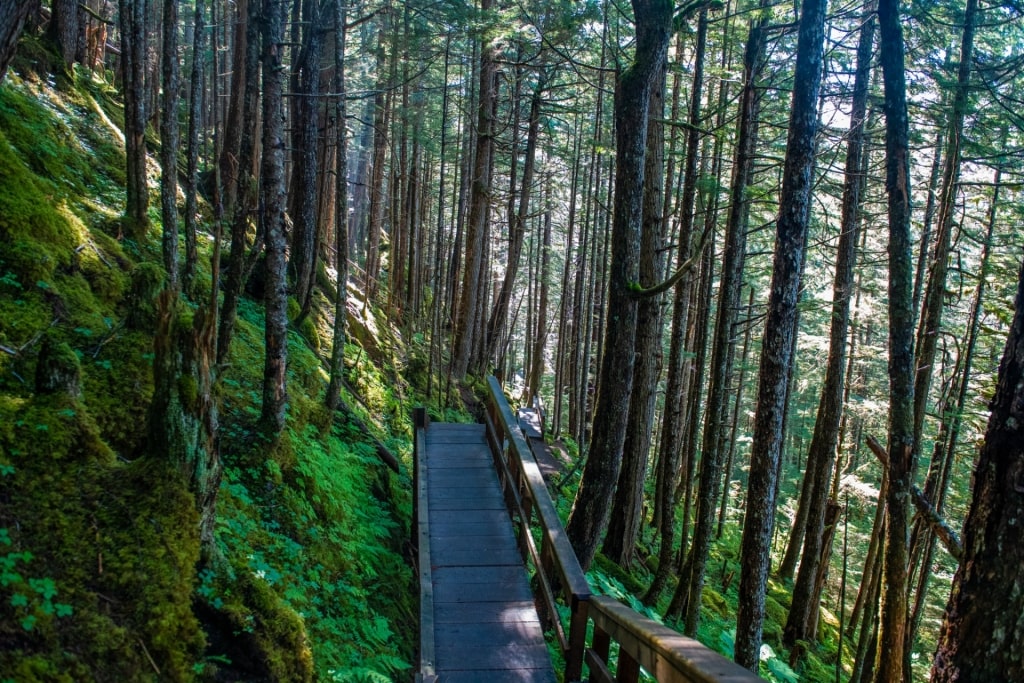
Tongass National Forest, Alaska
If the thought of Alaska conjures up images of the frozen north, think again. The Tongass National Forest is certainly home to magnificent glaciers but is also the largest national forest in the United States and the world’s largest temperate rainforest.
Covering some 17 million acres and the gateway to the Inside Passage, it consists of islands, mountains, and vast fjords, all lined with towering Sitka spruce and red cedar trees.
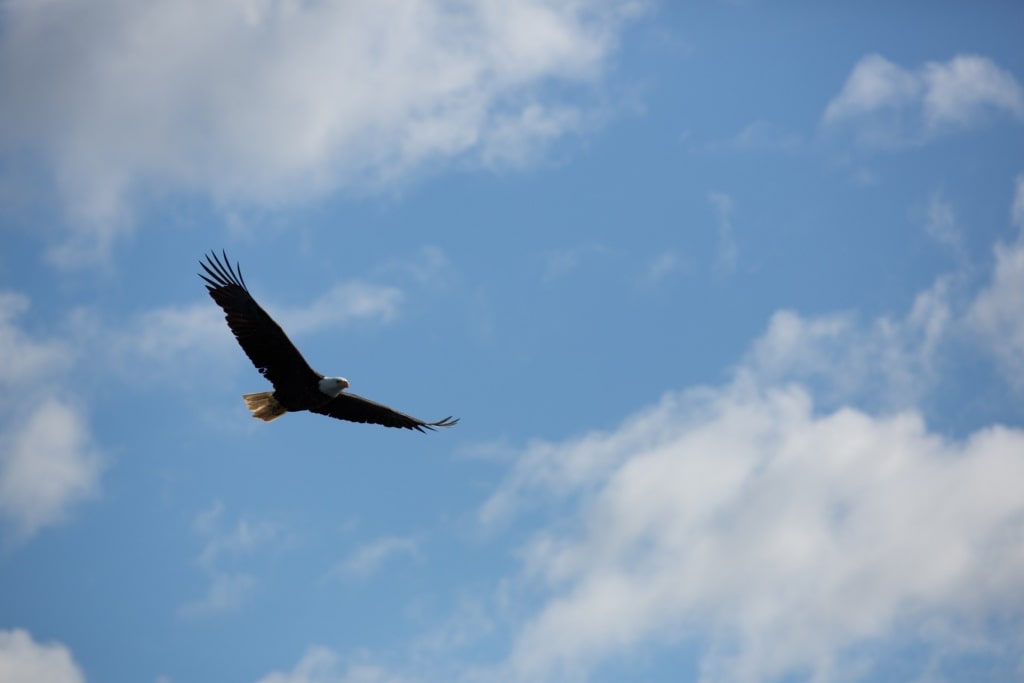
Bald eagle
Alaskan wildlife is abundant here. The Tongass is home to the densest concentration of brown bear in North America, as well as a thriving population of bald eagles. Sightings of the rare blue bear (a color phase of the black bear) are not uncommon, while humpback whales, porpoises, and seals can all be spotted offshore.
During the warmer summer months in Alaska, the forests, rivers, and streams also host one of the most unique natural phenomena in the world as countless salmon swim upstream to spawn.
Monteverde Cloud Forest Reserve, Costa Rica
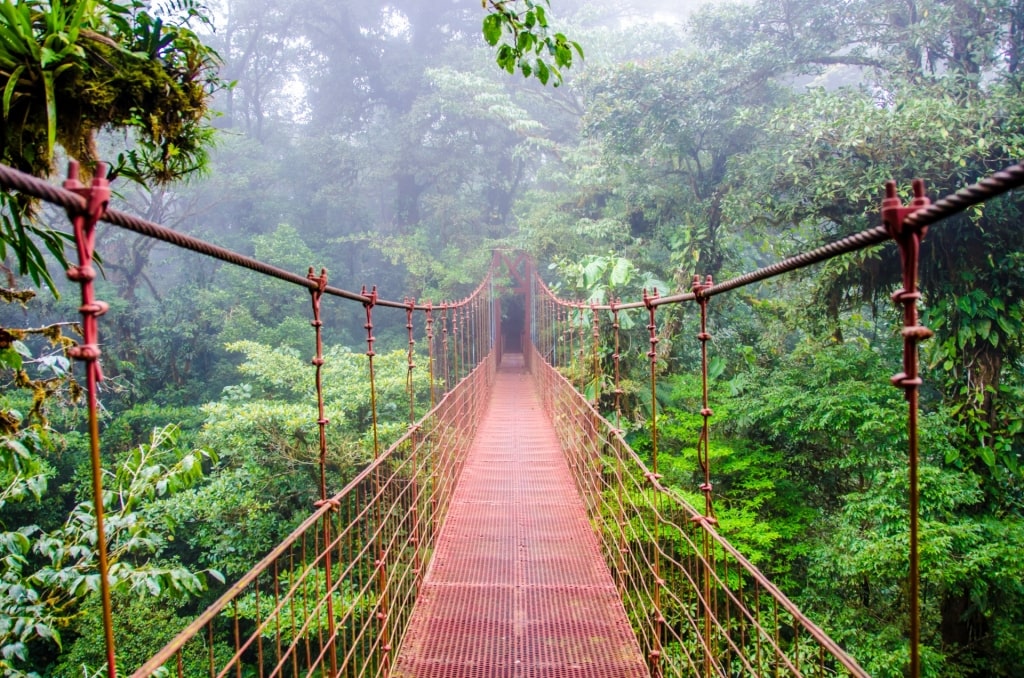
Monteverde Cloud Forest Reserve, Costa Rica
For archetypical vistas of a rainforest where the canopy disappears into a misty haze, look no further than Costa Rica’s Monteverde Cloud Forest Reserve, some 45 miles north of Puntarenas.
Spanning the continental divide between the Caribbean and the Pacific, the reserve is home to an extensive network of trails and suspension bridges that allow visitors to walk among the treetops for the chance to spot the hundreds of species that live here.
Highlights are more than 400 types of bird (including the aptly named Resplendent Quetzal with its bright red-and-green plumage), over 100 different mammal species, including howler and capuchin monkeys, and rare orchids.
Tijuca National Park, Brazil
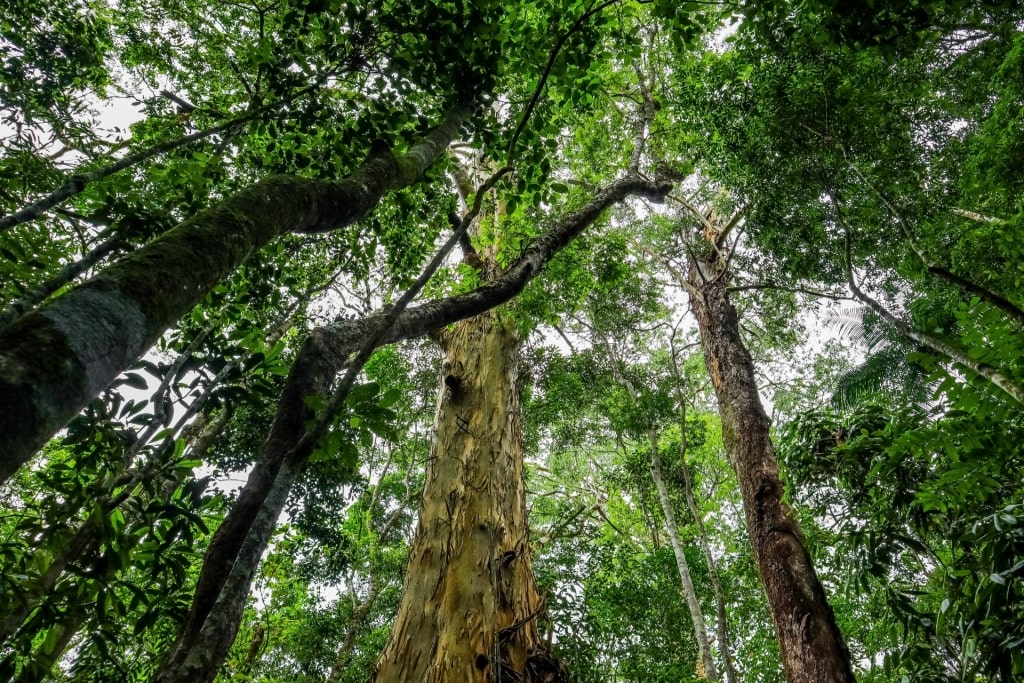
Tijuca National Park, Brazil
There are few urban rainforest destinations, but of them all, Tijuca, covering an area of around 13 square miles in Rio de Janeiro, is probably the most famous. That’s largely down to the forest being the setting for the most iconic sight that Brazil is known for, the 125-foot statue of Christ the Redeemer.
Standing with arms outstretched atop Corcovado mountain, the Brazilian landmark offers sweeping views over the city to Copacabana Beach and beyond. Many come here for those unique vistas but fall in love with the surroundings, too. The park is a labyrinth of paths through lush greenery hiding picturesque sights like the Taunay Waterfall.
Now considered the “lungs” of Rio de Janeiro, Tijuca was not always this way. In the 19th century, it had been greatly reduced by deforestation to create sprawling coffee plantations. Its existence today is almost entirely due to a huge replanting project led by locals.
Morne Diablotin National Park, Dominica
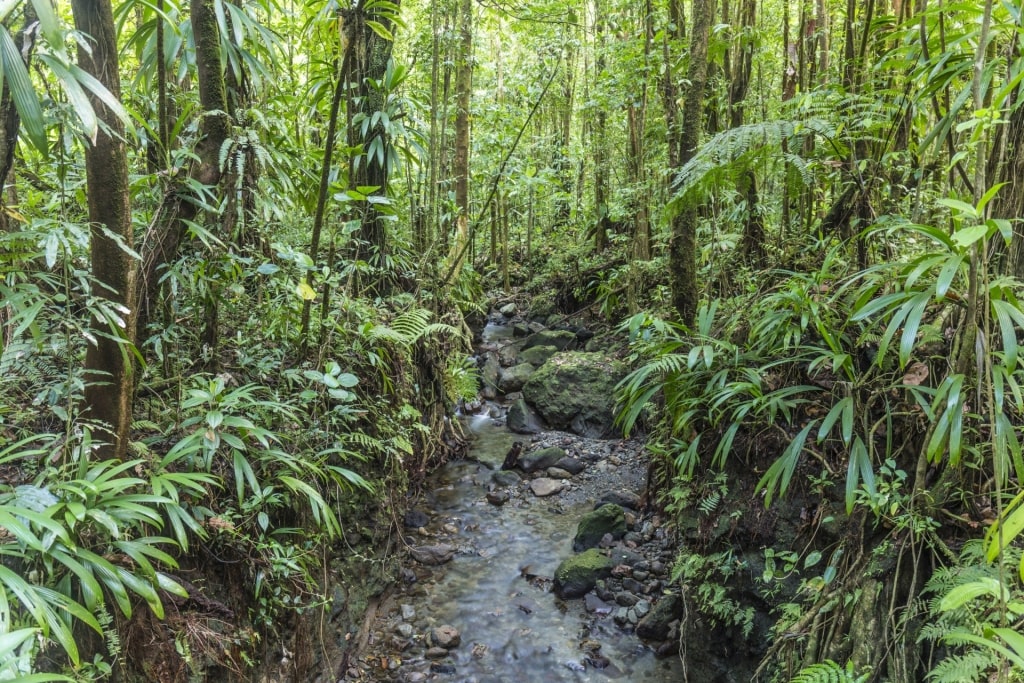
Morne Diablotin National Park, Dominica
Set in the mountainous north of Dominica, Morne Diablotin National Park is one of three protected national parks in the country, and also the newest. Established in 2000 and covering an area of 8,200 acres, it was created with the main aim of protecting the habitat of Dominica’s national symbol, the endangered sisserou parrot.
At its heart is Morne Diablotin, the island’s highest mountain, towering over the surrounding landscape from some 5,000 feet.
This rainforest destination is a hiker’s paradise with trails over steep slopes, through deep valleys, and by rushing rivers. The Syndicate Nature Trail, meanwhile, provides a gentler option thanks to a more sedate one-mile loop from the main visitor center.
Naturally, a highlight of a visit is spotting one of the rare sisserou, but look out too for another national symbol, the crapaud, or “Mountain Chicken” frog. One of the largest frogs in the world and featured on the country’s coat of arms, it is also an endangered species.
Cahuita National Park, Costa Rica
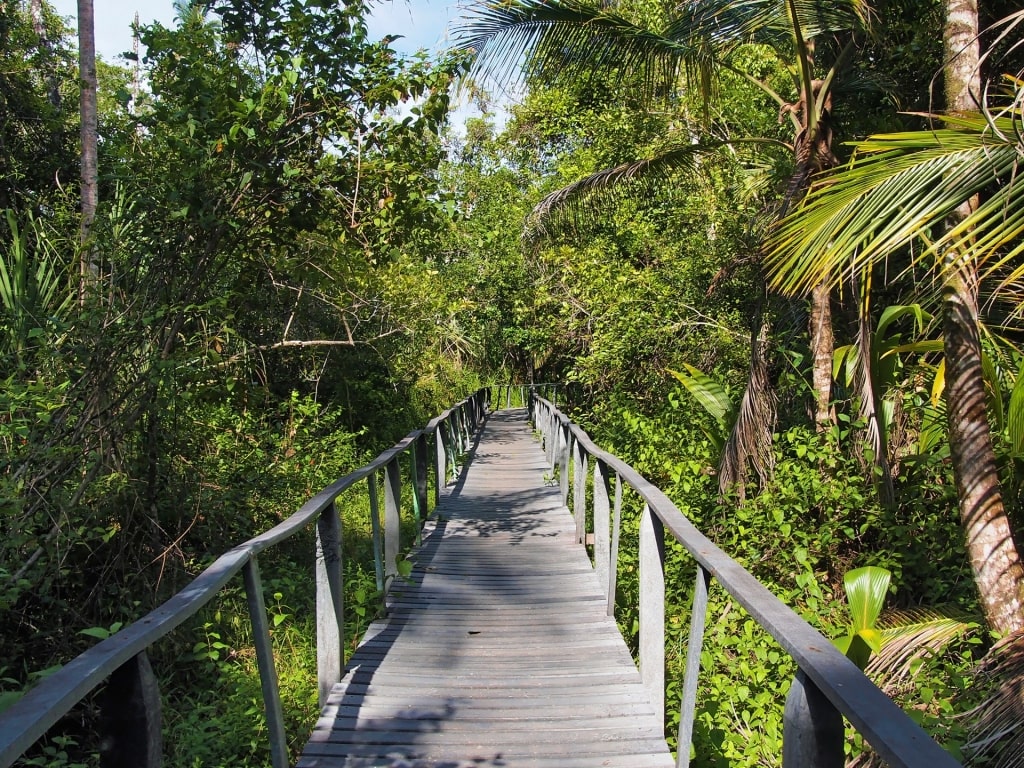
Cahuita National Park, Costa Rica
On the southeast coast of Costa Rica and close to the border with Panama lies the town of Cahuita. With its laid-back African-Caribbean vibe, the small beach community acts as the gateway to a huge national park covering more than 2,700 acres of land and some 55,000 acres of marine preserve.
Much like Australia’s Daintree, this is a place where rainforest meets reef. The “landside” is home to trails through coastal forests of palms and almendro trees where capuchin monkeys, raccoons, sloths, and iguanas roam.
Try to catch a glimpse, too, of the blue jeans dart frog, named for its bright red body and blue legs. The reef is a big draw, too. One of the most accessible in the country, it allows for great snorkeling and diving just offshore
Cockscomb Basin Wildlife Sanctuary, Belize
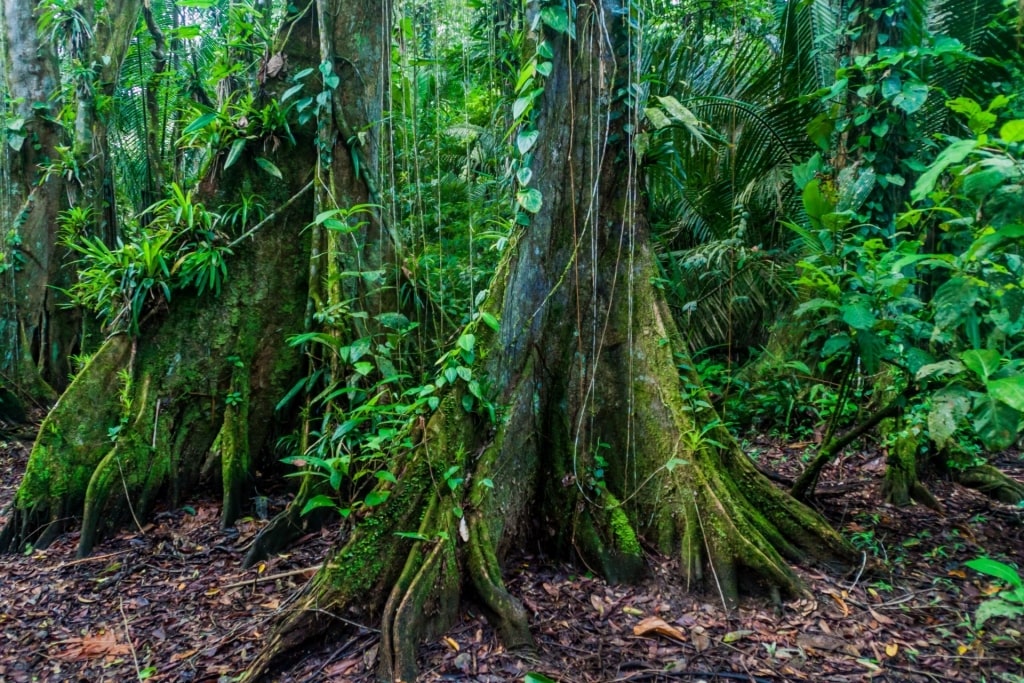
Cockscomb Basin Wildlife Sanctuary, Belize
If you want to see jaguars by daylight and outside of the confines of a zoo, there’s probably no greater place than the Cockscomb Basin Wildlife Sanctuary. Covering 150 square miles of southern Belize, it is the world’s only dedicated jaguar preserve, which helps protect some 200 of this magnificent and somewhat elusive wild cat.
The sanctuary sees rugged mountains, lush jungle, spectacular waterfalls, and meandering rivers come together in a relatively compact space where the jaguar is not the only wild cat on show. Cockscomb is also the preserve of puma, margay, jaguarundi, and ocelot, as well as countless bird species including the scarlet macaw and the keel-billed toucan.
There’s a fine network of trails through the park for people to get around and sample these natural wonders, plus there’s a great tubing spot at the South Stann Creek River.
Read: Best Things to Do in Belize
Edmund Rainforest Reserve, St. Lucia
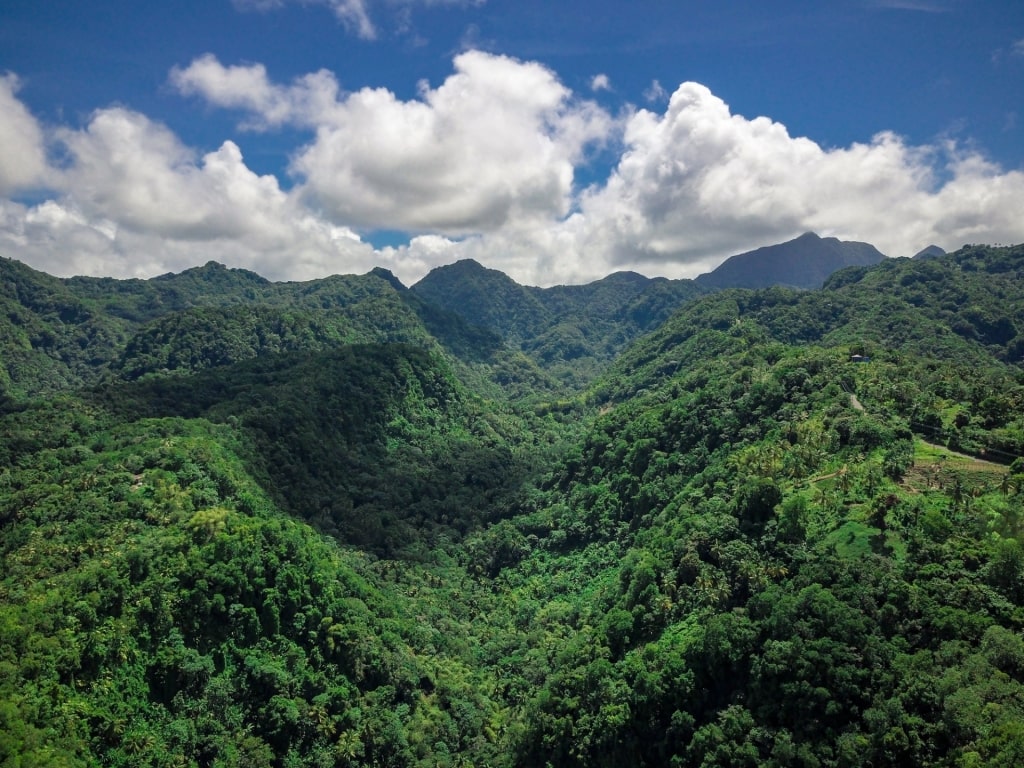
Edmund Rainforest Reserve, St. Lucia
Set in the heart of St. Lucia, the 18,000-acre Edmund Rainforest Reserve is one of the Caribbean’s most pristine natural environments.
This land of mountains and valleys is lined with towering mahogany trees, giant gommier trees, and exotic flowers, with orchids providing the occasional riot of color.
Hikers will find a maze of trails to explore. Winding under the dense canopy, they can lead to spectacular waterfalls and hidden streams, with elevated spots offering views of both the surrounding mountains and the glistening Caribbean in the distance.
The Edmund Rainforest Trail is a seven-mile strenuous hike offering excellent views of Mount Gimie, while the Millet Bird Sanctuary trail is both less intense and ideal for bird watchers. Set over a two-mile loop, it passes through a habitat with more than 30 species, including the country’s national bird, the St. Lucian parrot, known locally as the jacquot.
The National Park of American Samoa, Pago Pago
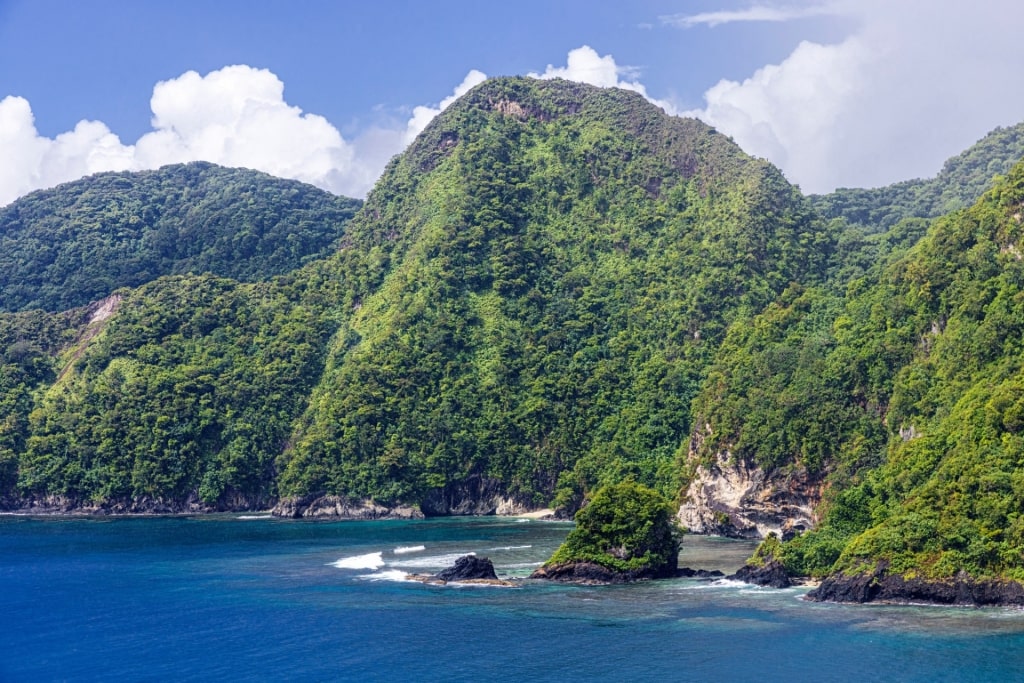
The National Park of American Samoa, Pago Pago
Set across three islands of American Samoa—Tutuila, Ta‘ū, and Ofu—this national park takes in 13,500 acres of coral reefs and tropical rainforest and is, perhaps, unique in that it also serves to protect Samoan culture.
Landscapes here include rugged cliffs, volcanic ridges, beaches of ice-white sand, and the incredible seabird sanctuary Pola Island that rises steeply from the sea on the west side of Vatia Bay.
Pola plays host to Red-footed boobies and greater frigatebirds. The surrounding reefs, meanwhile, are home to 950 fish species and more 250 coral species, making them a prime diving spot.
Visitors can also learn about the fa‘asamoa—the Samoan way—in villages such as Vatia, where there’s the chance to take part in traditional ceremonies or hear tales passed down through generations.
Antigua Rainforest, Antigua
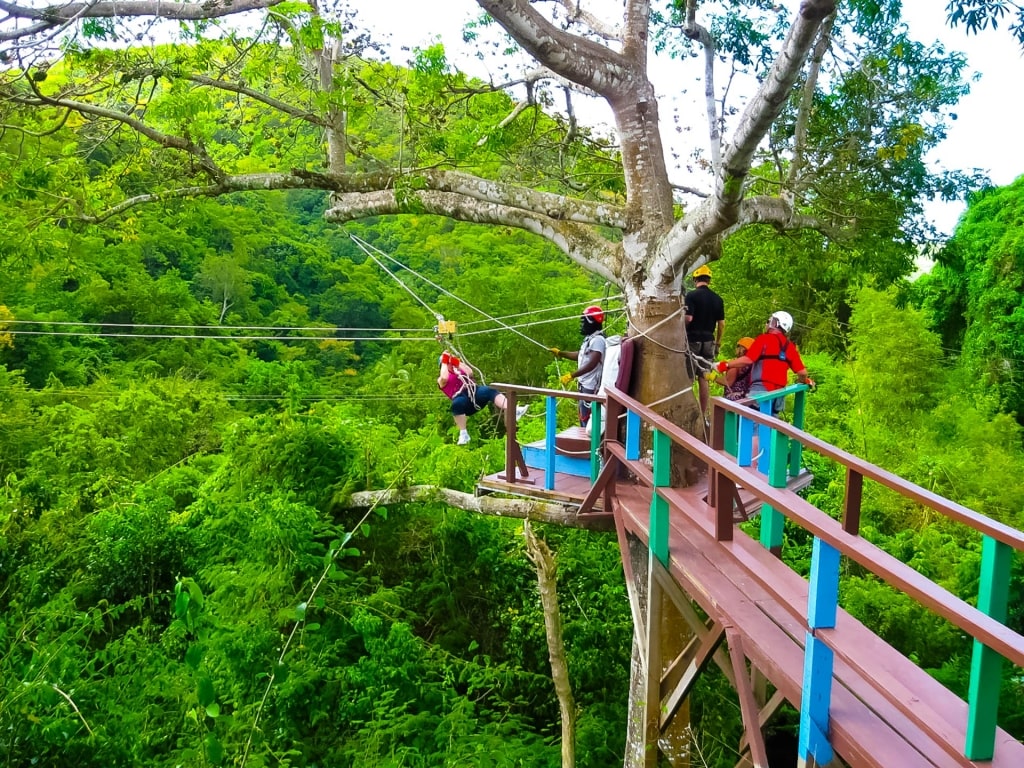
Antigua Rainforest, Antigua
Small but perfectly formed, Antigua’s rainforest is a plush, green landscape of mahogany trees, bamboo, and ferns set in the south-central hilly interior.
Home to tropical birds such as the Antiguan bullfinch, and numerous species of lizards and tree frogs, the humidity also supports a wide variety of plant life including rare orchids, and herbs used in traditional remedies.
One of the most accessible ways to visit while in Antigua is to hire a jeep and travel through the jungle and various traditional plantations that line the five-mile-long Fig Tree Drive.
Around halfway along its length lies the Antigua Rainforest Company which operates a number of suspended walkways and ziplines, culminating in the final challenge, aptly titled The Leap of Faith.
Read: Best Things to Do in Antigua
Conway National Park, Australia
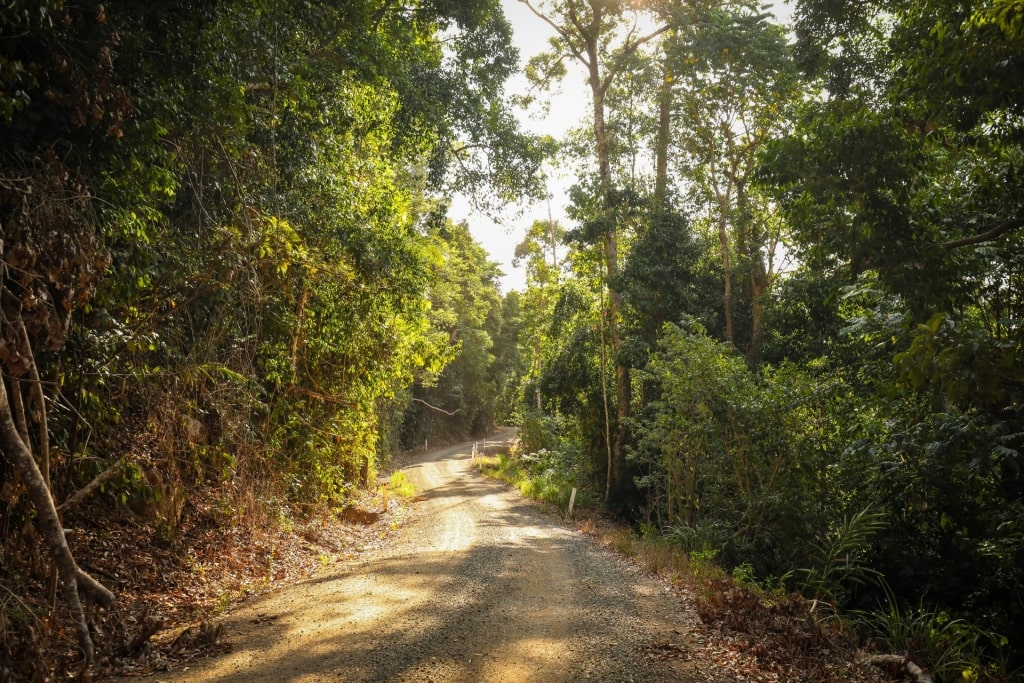
Conway National Park, Australia
Conway National Park lies 460 miles to the south of the Daintree Rainforest and is easily accessed from vibrant Airlie Beach, a lively seaside town that also acts as a gateway to the beautiful Whitsunday Islands.
The park spans some 50 miles of coastline, taking in mangrove forests by the water and wet tropical rainforests the further you get inland. It also acts as a sanctuary for the unique Proserpine rock wallaby, as well as numerous bird species, including endangered bush stone-curlew and the wompoo fruit dove.
Hikers can enjoy numerous walking tracks including the Whitsunday Great Walk, and some incredible viewpoints such as Honeyeater Lookout, which offers panoramic views of the Whitsundays.
Fiordland, New Zealand
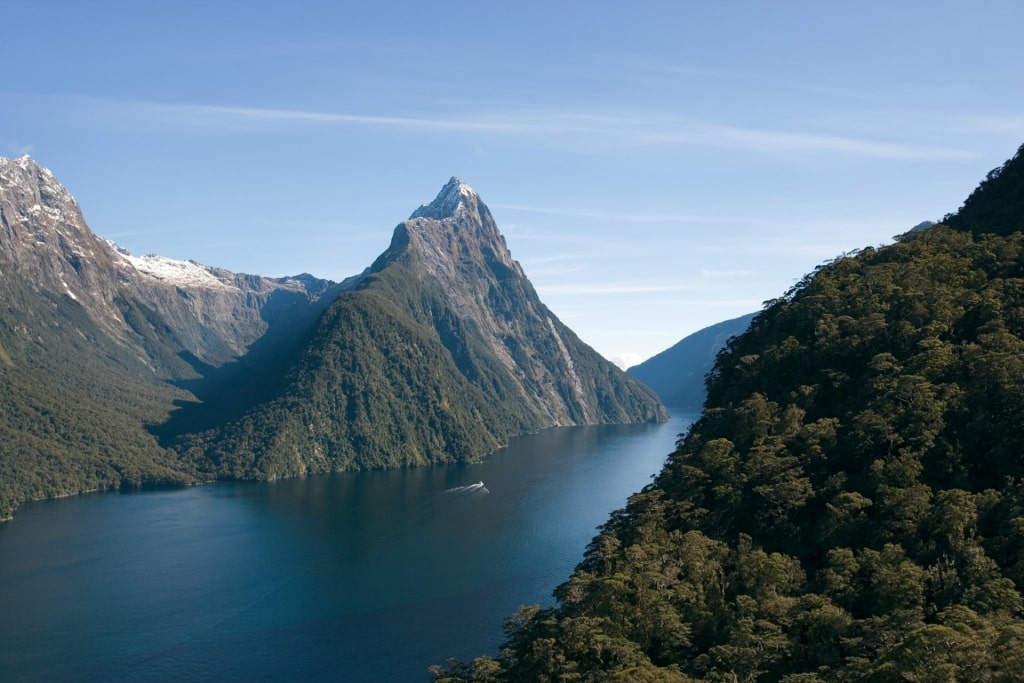
Fiordland, New Zealand
Fiordland is the kind of rainforest best seen from the water. Home to some of the most beautiful places in New Zealand, it is the location of both the famed Milford Sound and Doubtful Sound.
These two fjords see rainforest-clad cliffs rise dramatically from the ocean and waterfalls tumble hundreds of feet back down to the sea below.
Carved by glaciers more than 100,000 years ago, the landscape here, with its tall granite peaks and shimmering lakes, has scarcely changed since. Little wonder it has been used as a filming location for movies set in mythical faraway lands.
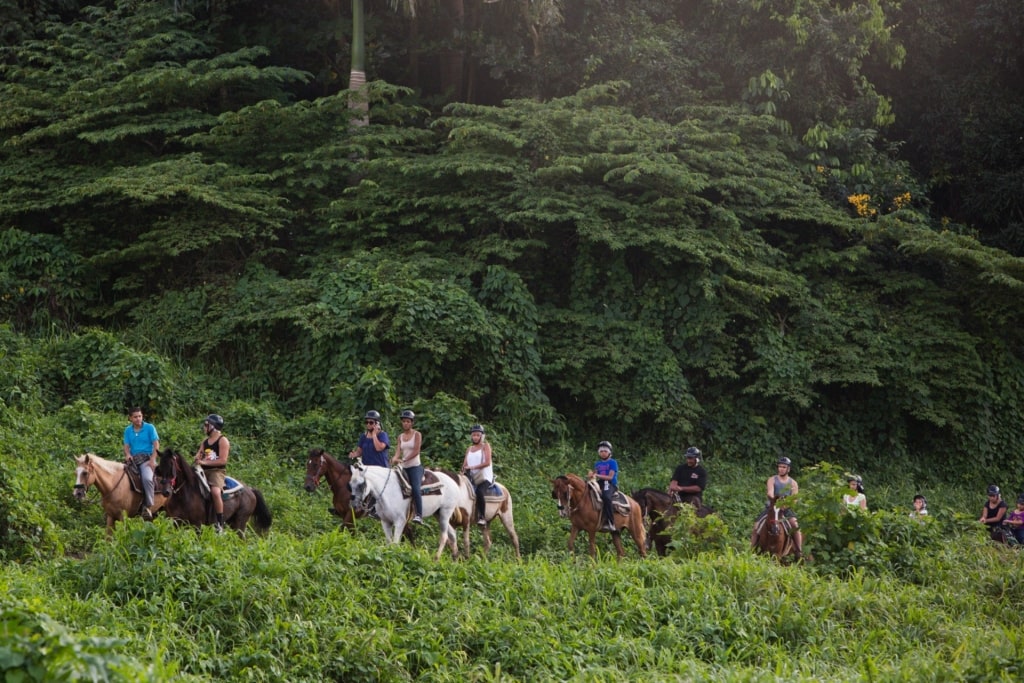
El Yunque National Forest, Puerto Rico
Discover amazing rainforest destinations worldwide with Celebrity Cruises. Browse itineraries here and plan your next adventure today.
